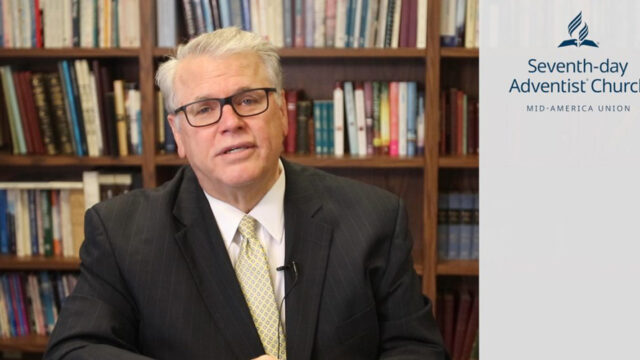End-time sensibilities in times of crisis

Declared a pandemic by the World Health Organization on March 11, 2020, COVID-19 went on to hijack the headlines of major news channels around the globe. The outbreak that started in Wuhan, China, quickly spread around the world, forcing governments to close their borders, cancel public events, and order people to limit their exposure to public places. The financial crisis ignited by industrial and trading sectors melted the stock markets of several world economies, leading some to fall by more than 50 percent in just weeks.
This scenario has led some to look for reason or meaning in current events, and the role it could play in the fulfillment of end-time prophecies. Many ask: Is this one of the signs of the end?
Because of the uncertainty and confusion in the minds of many, it’s important to analyze how the Bible describes these phenomena. As we will see, the pests, plagues, and diseases reported in the Bible did not always occur for the same reasons.
Satan and Job
The most emblematic example of Satan as a disease-provoking agent is probably found in the book of Job. As the story goes, a man was “blameless and upright; he feared God and shunned evil” (Job 1:1). But he was stricken with “painful sores from the soles of his feet to the crown of his head” (Job 2:7).
The author of the book of Job makes it clear that all this torment was caused by Satan (Job 2:7). This angelic being is portrayed not only as Job’s accuser, but also as a supernatural entity given freedom to carry out his evil plans. Even though he was a created being, he was able to provoke natural disasters (Job 1:19), diseases (Job 2:7), even imitate supernatural acts that only the Creator could perform (Job 1:16; cf. 1 Kings 18:20-40).
In the story of Job, Satan is portrayed as a powerful and evil being who is constantly under divine supervision and control. In this cosmic conflict he’s able to manipulate physical reality, cause disasters, create diseases, and operate signs and wonders.
Ellen White wrote that Satan “works through the elements also to garner his harvest of unprepared souls. . . . When he was suffered to afflict Job, how quickly flocks and herds, servants, houses, children, were swept away.”1
She wrote that near the end of time, Satan “will bring disease and disaster, until populous cities are reduced to ruin and desolation. . . . He imparts to the air a deadly taint, and thousands perish by the pestilence.”2 She foresaw, “these visitations are to become more and more frequent and disastrous.”3
The notion of a fallen angel capable of spreading disease is extremely objectionable to our technological and scientific society. For centuries we have been conditioned to exclude anything supernatural. We are taught that diseases and epidemics are the result of microorganisms. That’s why there is no more talk of abandoning sin, accepting the lordship of Christ, and believing in God. Instead, we are told to wash our hands, avoid coughing or sneezing in front of others, and stop shaking hands or giving hugs.
This scientific view of the mechanisms and laws that govern the universe does not necessarily conflict with the belief in a supernatural reality that provokes natural phenomena. There is no incoherency in living to obey the laws of hygiene and health, while also recognizing that there are forces beyond our physical reality that fight against our health and salvation.
God and Punishment for Sin
Some may find it harder to accept the notion that, in addition to allowing evil, sometimes God is directly responsible in inflicting diseases and pests. Isn’t this incompatible with the Christian claim that there is an all-loving Creator who wants our greatest good? No, they are not incompatible. But we have to examine some cases in the Bible to understand how they correlate.
We could mention many examples, but for lack of space we will focus on just one. In the book of Exodus, it’s reported that God sent 10 plagues on Egypt, of which two fall into the category of diseases: the pestilence on the animals (Ex. 9:3, 6) and boils (verse 10). Here we see God sending destruction and calamity over a pagan nation that had rejected the order to let His people go free.
Each succeeding plague grew in intensity and destruction. The Bible says that the 10 plagues served as “mighty acts of judgment” (Ex. 6:6; 7:4) for the Egyptians’ explicit and continued disobedience. At the same time, each plague was an act of mercy, making Pharaoh aware of his hardened state and giving him the opportunity to submit to divine will. The plagues also served as a message that Egyptian gods didn’t compare in power and authority to the God of Israel.
Every time God allows sickness, destruction, or evil in the Bible, He does it with the intent of awakening everyone to their condition of rebellion and sinfulness, hoping that they will change their obstinate ways before it’s too late. As we consider the pain we experience, and compare it with what God wants to achieve in us, we should conclude that His ways are better than ours. Our hope should be greater than our suffering. The apostle Paul wrote: “I consider that our present sufferings are not worth comparing with the glory that will be revealed in us” (Rom. 8:18).
Humans and Disobedience
There are also cases of illness caused by human action, disobedience to the laws of health. An example is the consumption of inappropriate food or harmful drinks (Lev. 11; Prov. 23:30-33). Sinful habits can, in the long run, create chronic conditions, as seems to have been the case with the paralytic of Bethesda (John 5:8, 14).
Human beings have the capacity to cause their own destruction. Centuries of failure to comply with health laws has left their mark on society, causing humanity to decrease in strength, energy, health, and intelligence.
The End-time Stage
Jesus predicted that these things would become more common before His second coming. These signs should not frighten or alarm us: “See to it that you are not alarmed,” He said. “Such things must happen, but the end is still to come” (Matt. 24:6). These events simply serve as confirmation that the Lord’s words are true and faithful.
Likewise, in fulfilling our prophetic mission of preparing the world to meet Jesus, our goal in drawing people’s attention to these natural disasters should not be to alarm, but to show that this is the time to take sides with Christ.
We should not interpret the signs of Christ’s coming as one-time events, but happenings that extend until the second coming of Christ, creating a window of opportunities for “everyone to come to repentance” (2 Peter 3:9).
The coronavirus pandemic is part of a sequence of signs that warn our society that the window of opportunity is closing. Moments such as these offer unique opportunities to reach people who, under normal circumstances, would never listen to the invitation of the everlasting gospel.
The global readjustments to this crisis can help us better understand the scenarios in place when the world will finally be ripe for the final battle. Let’s remain observant and attentive until that glorious cloud of Christ’s return appears in the heavens.
1 Ellen G. White, The Great Controversy (Mountain View, Calif.: Pacific Press Pub. Assn., 1911, 1950), p. 589.
2 Ibid., pp. 589, 590.
3 Ibid., p. 590.








